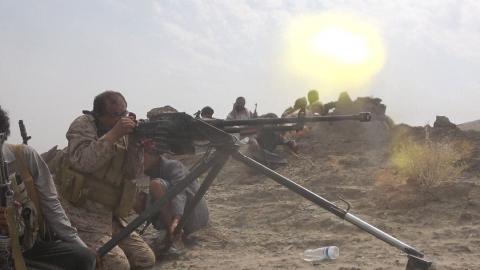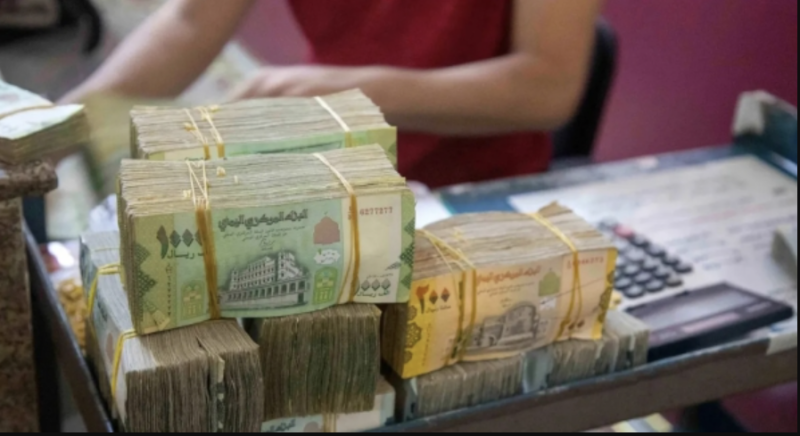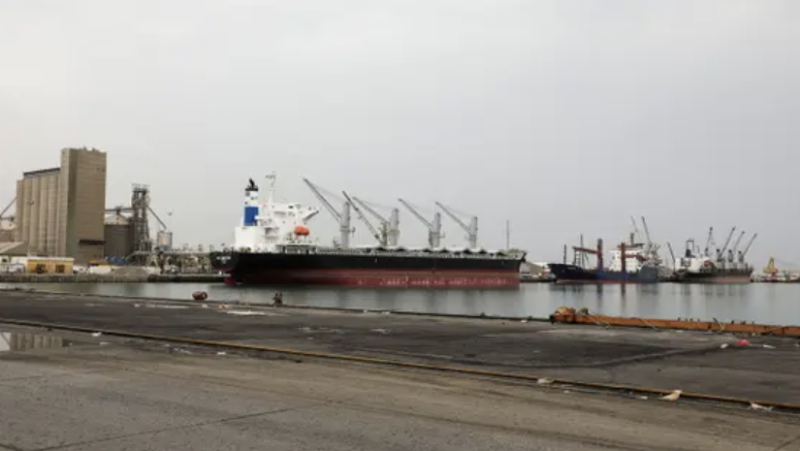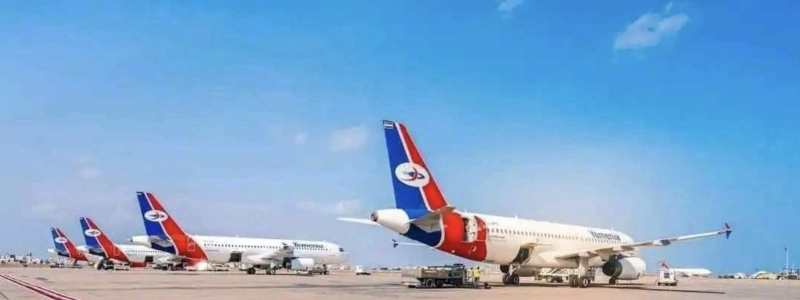Yemen Risk Overview: Outlook for December 2020–May 2021 (March update) | Risk Update 15 April 2021


Risk 1
Depletion of foreign currency reserves drives inflation up; eroded purchasing power and high food prices result in increased levels of food insecurity.
Sources of foreign currency inflow in Yemen – especially oil exports, humanitarian funding, and bilateral financial support – remain constrained. The average exchange rate for the new Yemeni rial (YER) banknotes under the Internationally Recognized Government (IRG) was higher in March than in February. Remittances also remain below pre-COVID-19 levels, although they are likely to increase during Ramadan. IRG revenues from oil exports are expected to remain limited because of global crude oil prices decreasing again at the end of March, along with limited exports from Yemen. The decrease in oil price is the result of a decline in demand caused by movement and travel restrictions following the resurgence of COVID-19, as well as the decision by OPEC+ (the Organization of the Petroleum Exporting Countries, which includes the ten additional oil-exporting countries besides the formal OPEC members) to increase global supply to regulate prices (The Indian Express 14/04/2021). In March, the Kingdom of Saudi Arabia (KSA) announced a donation of petroleum products worth USD 422 million to the IRG to support power stations and public services (Reuters 30/03/2021). On 22 March, four fuel vessels left the coalition holding area and unloaded at Al Hodeidah; however, it is unclear whether sustained fuel imports through Al Hodeidah will resume. The continued risk of limited access to fuel also affects essential services, including the production and transport of food. The announcement of the KSA donation contributed to a brief appreciation of the rial in IRG-controlled areas. The exchange rate of the new rial banknotes used in IRG areas decreased from YER 892 throughout March to YER 830 per 1 USD on 31 March, the day after the announcement. In the Houthi-controlled north, the rial value averaged at YER 603 per 1 USD for the entire month of March – in line with the previous month (YETI Dashboard accessed 06/04/2021) – although it began to increase at the beginning of April. Experts share concerns about the effect the depletion of foreign currency could have on sustaining the letters of credit system, which supports food imports, at the Central Bank of Yemen in Aden.
Although food imports will continue, food prices are expected to follow the exchange rate and are therefore likely to increase and diverge among different geographic areas of control. Price inflation remains the most commonly reported constraint when accessing food and WASH items, fuel, and water trucking services (REACH 06/04/2021). The increase in food prices has led the Yemeni people to adopt negative coping strategies, such as reducing the number and/ or size of meals, borrowing food or requesting help from friends and relatives, and relying on less expensive food (IRC 26/03/2021). In the long term, these behaviours are likely to have a detrimental effect on people’s health, making them more vulnerable to food insecurity, malnutrition, waterborne diseases, and other disease outbreaks.
Risk 2
Reduced capacity to deliver assistance – because of further cuts in humanitarian funding – impacts millions of people in need.
On 12 March, the US government announced that it would resume support to humanitarian organisations operating in northern Yemen following severe cuts from USAID in April 2020 (Deutsche Welle 13/03/2021). This support, along with the US strategy to stop military aid to the KSA in Yemen and the launch of KSA’s new peace initiative, could result in increased funding to Yemen; the most significant donors so far have been the US, the UK, and the KSA. As at the beginning of April, only USD 487 million of the USD 1.7 billion pledged to the Yemen Humanitarian Response Plan – out of the USD 3.85 billion required – has been disbursed (FTS accessed 07/04/2021). A lack of funding is likely to reduce humanitarian organisations’ capacity to respond to the increasing needs of the Yemeni people. Conflict and bureaucratic constraints also continue to affect organisations’ capacity to deliver assistance. In 2020, the number of people receiving assistance decreased across clusters; this trend is likely to continue during 2021 as a result of insufficient funding and persistent access constraints (OCHA 21/02/2021). Between March and April, Yemen saw a sharp increase in COVID-19 cases. A second wave of COVID-19 in Yemen could compel aid agencies to allocate more money to the health response at the expense of other sectors.
Risk 3
An attempt by the Houthis to enter Marib city intensifies the conflict, leading to mass displacement, civilian casualties, disruption to livelihoods, and lack of humanitarian access.
The Houthi offensive against IRG forces in Marib began in February and continued throughout March; there is no indication that it will end anytime soon. Since 8 February, over 18,000 people have been displaced, mainly from or within the Sirwah district. Airstrikes also caused civilian casualties and damage to civilian homes. The affected population is predominantly IDPs who have been displaced multiple times and who were being hosted in the largest hosting sites of Al Zur, Dhanah Al Sawabin, and Danah Al Hayal (IOM 07/04/2021; UNCHR 05/04/2021). Humanitarian assistance has been hindered by a lack of resources, access constraints, and insecurity, and local public infrastructure is unable to absorb the large influx of IDPs. No significant changes to the frontlines were reported in March. Daily fighting persisted on the same fronts on the west of Marib, around the dam, and in the southern districts of Rahabah and Jabal Murad. Missile launches on Marib city have also been reported since the beginning of the offensive. Severe conflict is expected to continue in Marib, and civilians remain at risk. On 22 March, KSA offered a comprehensive ceasefire in Yemen and cleared four fuel vessels through the Al Hodeidah port. Fuel imports through the northern port were regularly blocked between June–September 2020 and again since December. These actions likely aimed to induce a halt in hostilities in Marib – the last stronghold of the IRG in the north and the main source of oil and gas in Yemen. The Houthis have requested that the ceasefire include a complete and unconditional lifting of the restrictions on Sana’a airport and Al Hodeidah port, however (France24 23/03/2021).
Read more in ACAPS’ Yemen: Marib district profiles report.
Risk 4
Sudden decline in public service provision in IRG-held areas leaves millions of people requiring external assistance for their basic needs, while humanitarian access is also reduced.
At the beginning of March, Prime Minister Maeen Abdulmalik Saeed announced that the IRG would take steps to address the deteriorating economic and service issues in the south. A committee led by the IRG Ministry of Oil and Minerals will work to return the Aden refinery to its previous capacity, and the Yemen Petroleum Company will organise fuel distribution to reduce the demand for foreign currency. The fuel donation pledged by KSA may also contribute to addressing the long-sustained power outages recorded in the past months in Aden (Debriefer 11/03/2021), but it is unlikely that this donation will be sufficient to support power grids during the hot summer months. On 16 March, ongoing protests regarding unpaid salaries and deteriorating public service provisions in Aden and other governorates under the IRG culminated with protesters storming the presidential palace. While the demonstration remained peaceful, demonstrators – including members of the national security forces who had not been paid for several months – held flags of the Southern Transitional Council (STC). STC-affiliated security forces also allowed protesters to approach the gates of the palace (Al Jazeera 16/03/2021). Similar protests took place in Seyoun, Hadramawt governorate, and Zinjibar, Abyan governorate, with protesters objecting the deterioration of services, dire economic conditions, and increasing prices of basic commodities. Future developments of the conflict in Marib, especially if the Houthis are successful, will largely affect IRG legitimacy. This legitimacy could be exploited by the STC in the south, leading to further disruptions in services and a potentially renewed conflict.

Paris — The French humanitarian organization Acted announced that it has delivered cash assistance to nearly 89,000 people affected by displa…

Sana’a — Fuel and food imports into ports under the control of Yemen’s Houthi movement on the Red Sea have continued to fall for…

ADEN — Yemen Airways, the country’s national carrier, announced it will resume flights between Aden and Abu Dhabi beginning in January…